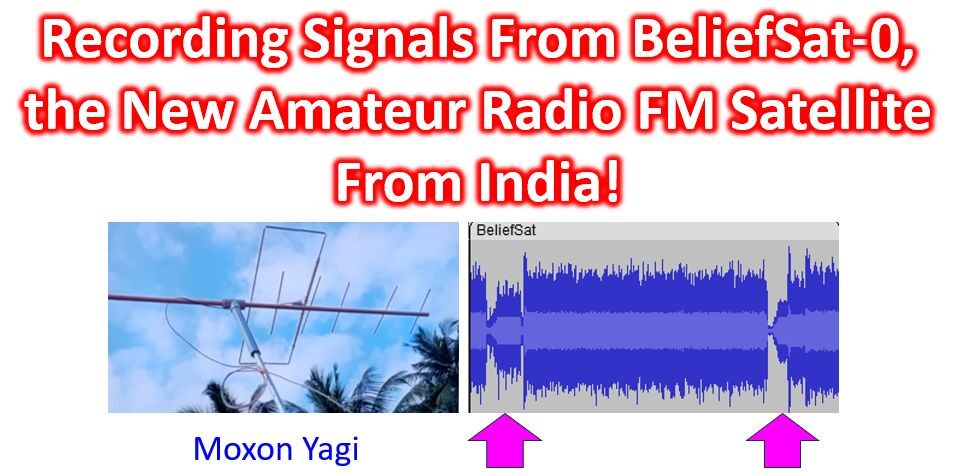Recording Signals From BeliefSat-0, the New Amateur Radio FM Satellite From India
Recording Signals From BeliefSat-0, the New Amateur Radio FM Satellite From India
I had posted about the launch of BeliefSat-0, the New Amateur Radio FM Satellite From India, yesterday. Today morning when I woke up a bit early, I found that there is a good elevation pass of BeliefSat-0 in my region and decided to check. I had already kept my Moxon Yagi in the direction of BeliefSat-0 pass yesterday. It was on a fixed elevation of around 15 degrees, in Southward direction, which corresponded to the azimuth of maximum elevation of the satellite pass as it has an equatorial pass.

I used the Argentinian Amsat webpage to track Doppler during the pass, which showed the satellite as ‘BELIE’ with NORAD ID: 58695.
That NORAD ID is being tracked by N2YO website as PSLV Rocket Body and showed a good elevation pass in my location.
BeliefSat-0 is attached to the PSLV rocket body and has a power output of about 1 W and is at an altitude of around 350 km, all favourable for the limited setup which I am having. I could clearly hear the buzzing sound a little bit before the time of closest approach (TCA), twice at about a spacing of 30 seconds. Could not hear it at TCA and beyond, possibly because my Moxon Yagi was kept at a fixed low elevation and azimuth. Earlier when the digipeater on Amateur Radio on International Space Station was active, I could hear similar signals on 145.825 MHz.
The downlink frequency of BeliefSat-0 is 145.980 MHz and only small changes occur during the pass being on VHF. Uplink frequency is 437.000 MHz with 67 Hz CTCSS tone. Although 71.9 Hz RX CTCSS tone was mentioned in a personal communication by the faculty in charge, it was not needed for receiving the signals from BeliefSat-0. RX CTCSS tone is meant to cutoff any other signals coming on the same frequency. Obviously there was no other signals on that VHF frequency when I monitored the pass starting from 3.47 am in my region!
I am reproducing both the graphical representation of the audio recording in Audacity editing software and the audio here. I did try to give a few calls after that and I could not hear any reply, nor my audio down the downlink. I am quite happy to hear the digital signals from BeliefSat-0, a project of the undergraduate students of K.J. Somaiya Institute of Engineering and Information Technology, Sion, Mumbai. My hearty congratulations to Team BeliefSat-0!